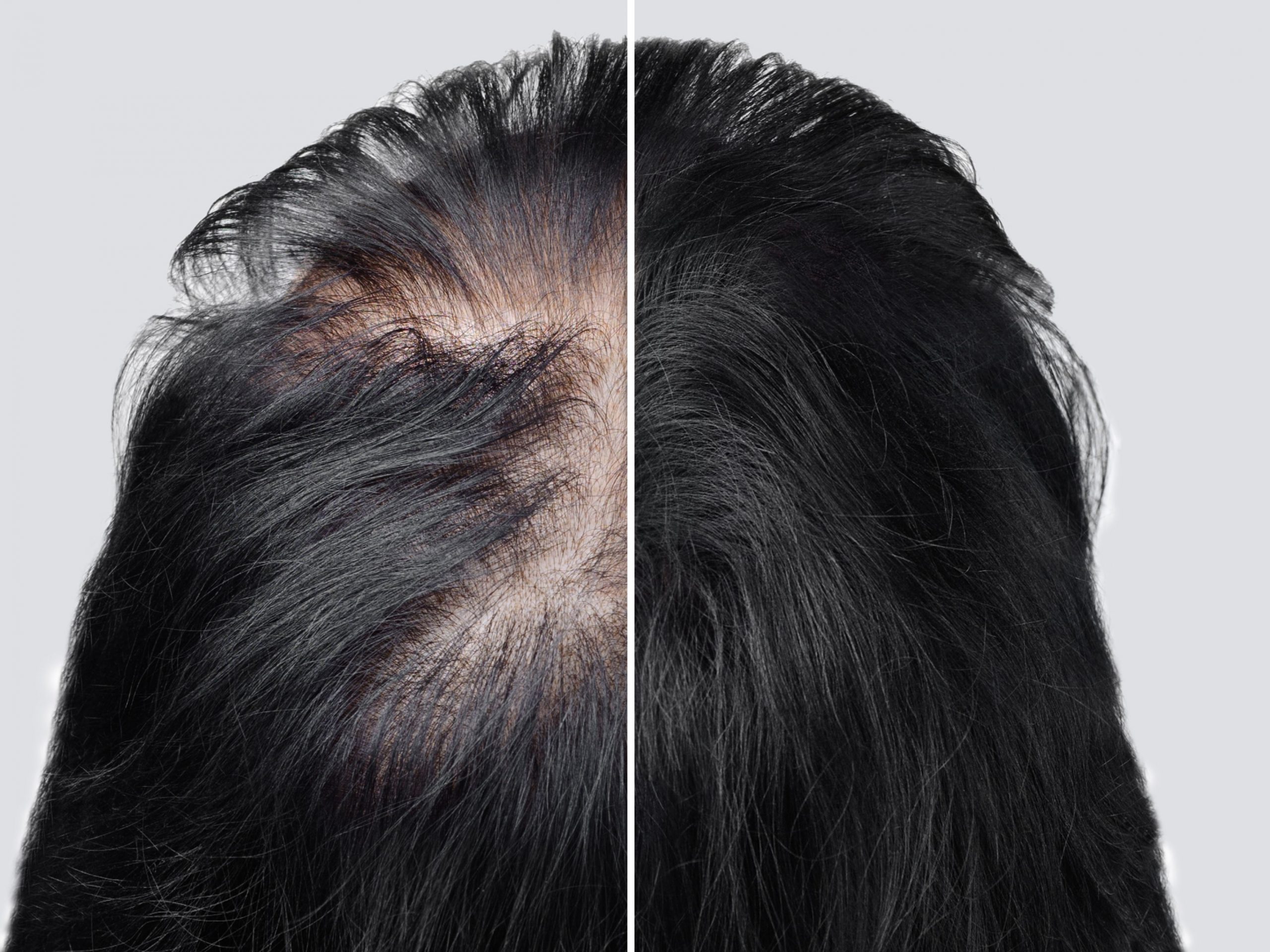Alopecia and hair loss: what you need to know
Even though many people think that alopecia only affects men, it is estimated that more than 50% of women will experience noticeable hair loss (alopecia) at some point in their life.
Alopecia is a condition that can affect women or men on any stage of their lives. There are different types of alopecia. But the most common one is alopecia areata that affects 95% of the population with this condition.
In this blog, we talk about the difference between alopecia and normal hair loss. What are the causes, symptoms and how to deal with them. So, let ‘s start.
What is hair loss?
Hair loss is a completely normal body process. In other words, your hair has a growth cycle in which your hair grows, then, falls out, and finally grows again. For example, if you notice some hair in your hairbrush or in the drain after showering for a short period of time that is normal hair loss.
On the other hand, it’s important to recognize when ordinary hair loss has turned into something more serious like alopecia.
What is Alopecia areata?
Alopecia is an autoimmune disorder. That is to say that some cells from your immune system attack your hair follicles (body part that makes hair). This attack on a hair follicle causes the attached hair to fall out, usually in patches or lines.
However, every case is different, for example, some people lose it only in a few spots while other people lose a lot. In some cases hair grows back but then it falls out again. In other cases, hair grows back and starts the normal growth cycle.
Types of alopecia
1.Alopecia areata totalis. Total hair loss on your head.
2.Alopecia areata universalis. Hair loss all over your body.
3.Diffuse alopecia areata. Sudden thinning of your hair rather than lost patches.
4.Ophiasis alopecia areata. Hair loss in a band or patch shape.
Causes
- Some toxic medications that poison a growing hair follicle, for example chemotherapy or radiation therapy.
- Increased number of hair follicles reaching the telogen phase (stage where hair falls out).
- Reduced blood flow on the scalp.
- Stress is the most common cause of hair loss and alopecia around the world.
- Extreme physical stress or shock to your body.
- People older than 40.
- Women with newborn babies.
- People that usually use hairstyles that pull on the hair, for example tight ponytails or tight braids.
- Vitamin deficiency. Low levels of zinc, iron, and biotin may all contribute to hair loss.
- Extreme/ restrictive diets-Rapid weight loss.
- People who use harsh chemicals on their hair.
- Genes: Your family’s genes can cause thinning of hair in your scalp.
- Aging: Hormone changes as you get older can cause balding.
- Alopecia is more common when estrogen is lost during menopause.
symptoms
- Small bald patches on your scalp or other parts of your body.
- Patches may get larger and grow together into a bald spot.
- Hair grows back in one spot and falls out in another.
- You lose a lot of hair over a short time.
- More hair loss in cold weather.
- Fingernails and toenails become red, brittle (easy to break), and pitted (depression on the surface).
How to deal with alopecia and hair loss
Reduce stress and anxiety, for example with Indian Head Massage .This type of massage is highly relaxing, so it helps you to reduce stress and anxiety. In addition, everybody can take advantage of its multiple benefits. This treatment focuses on your head and in case of alopecia it can help you to improve blood flow to the area, increasing hair growth.
As alopecia is an autoimmune disorder, you can boost your immune system with MLD. It will also increase blood flow which improves hair growth, reduces stress and anxiety.
You can also try…
- Ask your GP for medical advice about your hair loss or alopecia case. If you’re losing more hair than usual, it could be a symptom of an underlying condition, such as hypothyroidism or vitamin deficiency.
- You can use over the counter medicines to treat hair loss.
- In extreme cases, ask your dermatologist or medical spas options include laser therapy, hair transplant, and corticosteroid injections.
In our next blog we will go deeper on how Indian head massage and aromatherapy can help you to avoid or deal with alopecia. We hope this information is useful for you. If you need advice or have any questions about our treatments, please contact us. You can find us in Mill Hill Broadway and Islington. We are always happy to help. If you like this blog, please share!
References:
https://www.webmd.com/skin-problems-and-treatments/guide/alopecia-areata
https://my.clevelandclinic.org/health/diseases/16921-hair-loss-in-women
https://www.healthline.com/health/scalp-massage-for-hair-growth#hair-growth-tips
https://www.hairguard.com/scalp-massage/
https://skinkraft.com/blogs/articles/scalp-massage-for-hair-growth
https://www.thehealthy.com/beauty/hair/scalp-massage-hair-growth/
https://www.aad.org/public/diseases/hair-loss/types/alopecia/causes
https://www.health.harvard.edu/staying-healthy/treating-female-pattern-hair-loss
https://www.webmd.coguide/alopecia-areatam/skin-problems-and-treatments/




Thank you for sharing this informative article; it will really help us.
Hi Ajay,
Thank you very much for your review about our blog and your kind words, we hope this information help you.
Kind regards,
Perea Clinic Team.